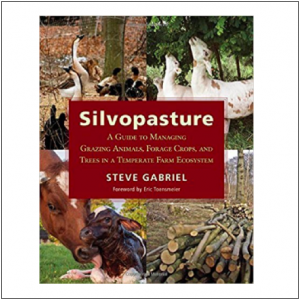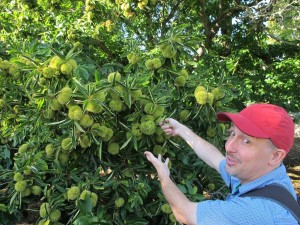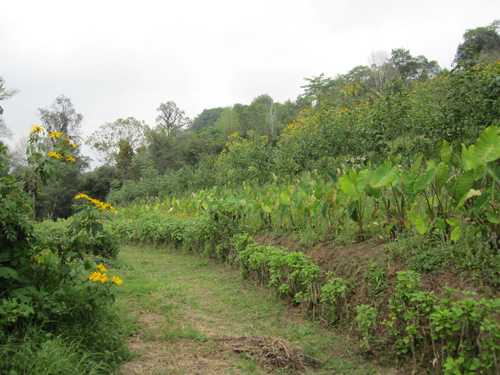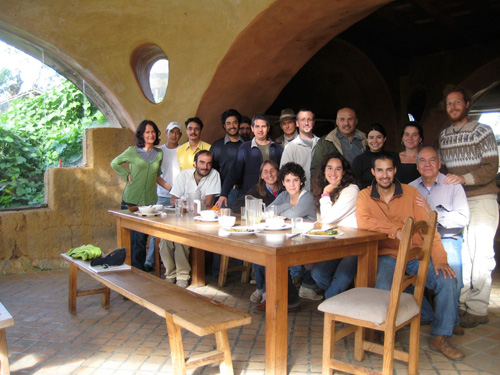I’ll be posting profiles of working permaculture farms here. These models of carbon-sequestering, soil-building, ecosystem-enhancing regenerative enterprises are important models, though each one is regionally adapted and may not apply precisely elsewhere. Check out the Carbon Farming Course for a month-long training on farm-scale permaculture.

Roberto Muj’s Perennial Market Garden
Roberto Muj is an agricultural trainer and community organizer for CIEDEG in Guatemala. He travels widely for work and designed a home food production system based on perennial crops that could survive his frequent absences. We taught a permaculture training together in January 2010 and I was amazed by his deep and wide knowledge of permaculture plants and systems. His home garden is one of the finest examples of perennial market gardens that I have ever seen.
The farm is in what is considered a chilly area as they sometimes get light frosts. Avocados grow but only some kinds of citrus will survive. Elevation is about 2200 meters. Most of the year is dry, with a 4-5 month rainy season in our summer.

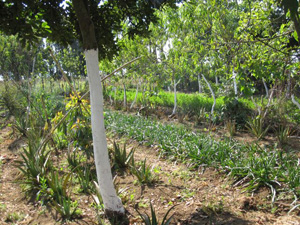
Much of the farm is laid out as a perennial alley crop system. Rows of productive trees alternate with perennial herbaceous crops. Trees include citrus, avocado, sweet gum, alder, mulberry, fig, macadamia, and giant yucca. Herbaceous crops include aloe, alfalfa for chicken fodder, perennial runner beans, perennial “colocha” kale, and many cut flowers including lot of Alstromeria.

The cut flowers and fruits are sold in local markets, with most of the production currently being in flowers and soon to shift to fruits as trees mature. We brought asparagus seed at his request as it is hard to procure in Guatemala but there is a huge market. Roberto wants to extend this production model to more of his acres which are currently producing corn – perhaps a macadamia-avocado-alder-asparagus type of system.


